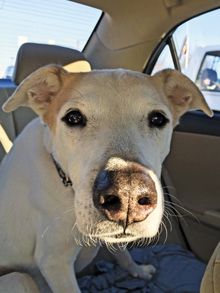A calamity of blood work errors
A series of unfortunate events showed me how pet owners play a critical role in accurate blood work.

Recently my 10-year-old greyhound mix, Romeo, woke me at 3:30 a.m. He was making that lovely noise everyone knows so well of a dog vomiting on a freshly cleaned carpet. He proceeded to decorate the carpet three times, so I got up, cleaned it up and hoped that it was nothing. I went back to sleep only to hear him doing it again two hours later. As a technician at an internal medicine specialist office, I can only think of the dreadful list of causes.
The first thing you need to know is that Romeo doesn't vomit. He's a dog that keeps it together day in and day out. So I got ready for work and took him to my office for radiographs and blood work so a veterinarian could diagnose his problem. The radiographs were unremarkable, but as the blood values came out of the machine his liver values were elevated. Right away my stomach dropped. I thought, “Oh no. Does my dog have something terrible?”
His alanine transaminase (ALT), alkaline phosphatase (ALP) and gamma-glutamyltransferase (GGT) activities were elevated. Ultrasonography was relatively unremarkable, and he was placed on a combination of two different antibiotics and an antioxidant. Consulting with my veterinarian we made a plan to recheck his blood work in two weeks.

The waiting game
The two weeks went by without any more problems. Romeo took his medications with ease, and he was eating well and acting normal. It was time to recheck his blood work, and since Romeo isn't the biggest fan of being in a kennel at work with me all day, the plan was to drive him to our satellite office that's closer to my house, draw his blood, drive him back home and then take his blood to my work to complete it so it could be interpreted by a veterinarian again.
When we ran his blood work again we found some weird abnormalities. His ALT activity was now normal, but his ALP activity was still elevated slightly and his GGT activity and bilirubin concentration were elevated, and other values indicated that he was dehydrated.
As I thought about it I realized I had committed a calamity of errors that we always warn owners about:
1. I fed Romeo about 45 minutes before drawing his blood. Feeding a pet can alter values in a pet's blood work.
2. I drew the blood and then waited 30 to 45 minutes before it was spun down and ran. This caused some of the red blood cells to hemolyze, or rupture, which can cause falsely elevated values.
3. Romeo didn't have anything to drink that morning, which caused him to appear dehydrated on his blood work.
I had broken so many rules we couldn't tell if his blood work results were accurate or if the values were skewed by my own actions. So we planned on rechecking them two days later. This time I wasn't going to feed him and was going to make sure he drank water, and we were going to perform the serum chemistry profile right away.

Take 2: The right way
This time we followed the instructions I'd known-but forgotten-in my pet owner-induced anxiety. And wouldn't you know it, he was no longer appeared dehydrated on blood work, his bilirubin was now normal, his ALT activity was normal, ALP activity was only a little elevated and his GGT activity was now normal. The doctor said Romeo's blood work was exactly where it should have been based on his treatment plan and his overall demeanor.
This was a very valuable lesson about the importance of making sure small points are followed before pets have their blood work completed. Taking the time to reinforce the importance of these instructions with pet owners can save time and heartache, and it may lead to a more accurate-and faster-diagnosis for pets.
Adam Oliver is a technician at Veterinary Specialty Care in Mt. Pleasant, South Carolina. Please send questions or comments to firstline@advanstar.com.